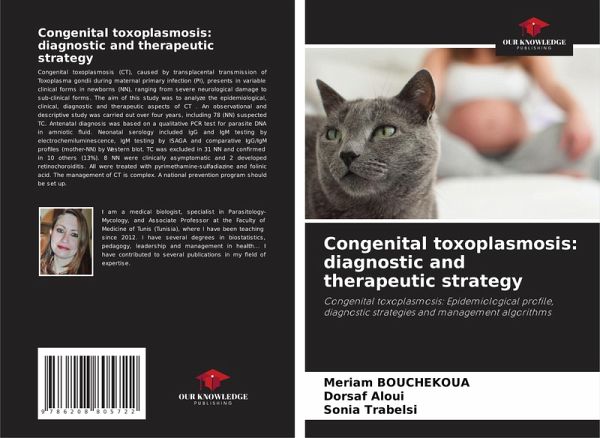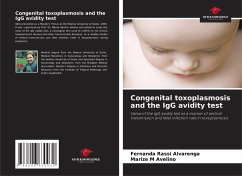
Congenital toxoplasmosis: diagnostic and therapeutic strategy
Congenital toxoplasmosis: Epidemiological profile, diagnostic strategies and management algorithms
Versandkostenfrei!
Versandfertig in 6-10 Tagen
40,99 €
inkl. MwSt.

PAYBACK Punkte
20 °P sammeln!
Congenital toxoplasmosis (CT), caused by transplacental transmission of Toxoplasma gondii during maternal primary infection (PI), presents in variable clinical forms in newborns (NN), ranging from severe neurological damage to sub-clinical forms. The aim of this study was to analyze the epidemiological, clinical, diagnostic and therapeutic aspects of CT . An observational and descriptive study was carried out over four years, including 78 (NN) suspected TC. Antenatal diagnosis was based on a qualitative PCR test for parasite DNA in amniotic fluid. Neonatal serology included IgG and IgM testing...
Congenital toxoplasmosis (CT), caused by transplacental transmission of Toxoplasma gondii during maternal primary infection (PI), presents in variable clinical forms in newborns (NN), ranging from severe neurological damage to sub-clinical forms. The aim of this study was to analyze the epidemiological, clinical, diagnostic and therapeutic aspects of CT . An observational and descriptive study was carried out over four years, including 78 (NN) suspected TC. Antenatal diagnosis was based on a qualitative PCR test for parasite DNA in amniotic fluid. Neonatal serology included IgG and IgM testing by electrochemiluminescence, IgM testing by ISAGA and comparative IgG/IgM profiles (mother-NN) by Western blot. TC was excluded in 31 NN and confirmed in 10 others (13%). 8 NN were clinically asymptomatic and 2 developed retinochoroiditis. All were treated with pyrimethamine-sulfadiazine and folinic acid. The management of CT is complex. A national prevention program should be set up.












